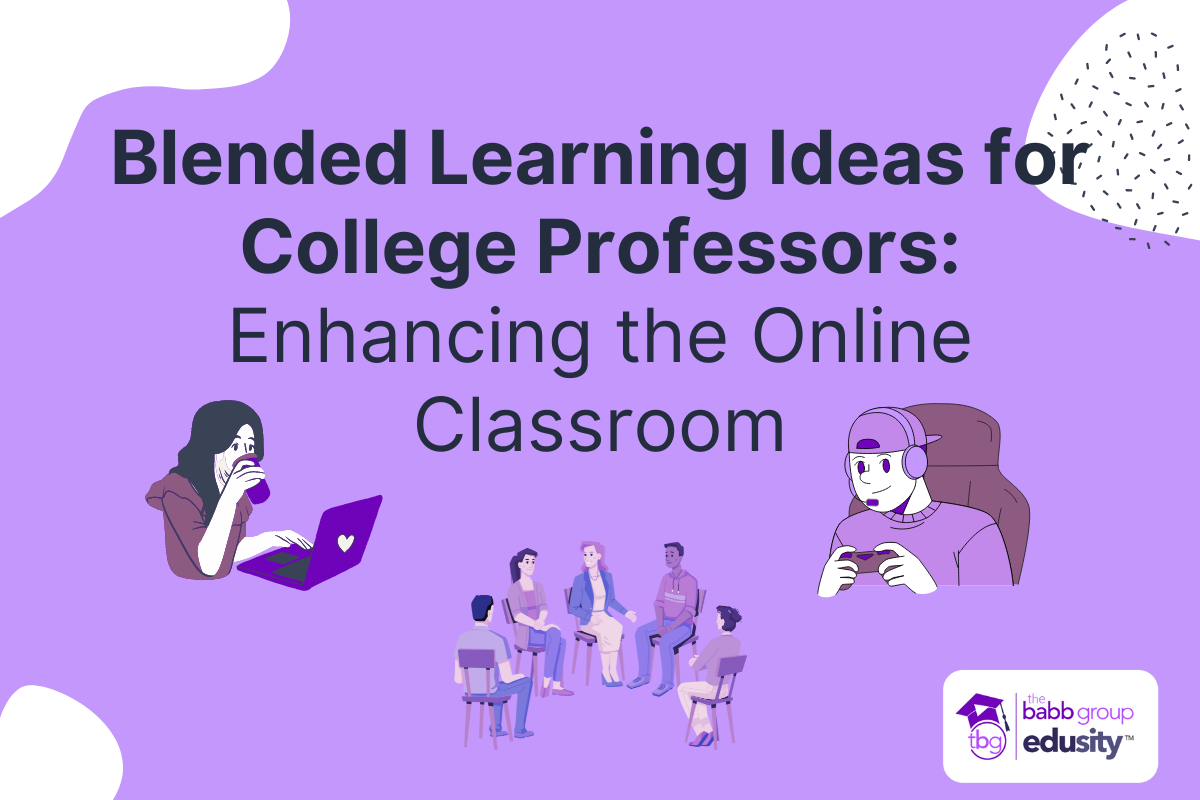“Blended learning” is a buzzword and gets interpreted in different ways depending on the college or university. In general, blended learning combines online and in-person teaching methods. It’s a solution to enhance the learning experience and keep students engaged.
Blended learning can be much more than teaching a face-to-face class and using an LMS to submit assignments. Combining online course content with an in-class learning experience gives students multiple ways to participate with one another, interact with resources, and deliver assessments.
Need ideas to enhance your blended classroom?
Here are three ways to use a blended classroom.
Use Multimedia Tools for Online Course Content
One of the advantages of online learning is the ability to use multimedia tools to deliver course content. College professors can create engaging online course materials using videos, podcasts, and interactive simulations. Using multimedia tools also caters to different learning styles, which increases student engagement and improves retention rates.
For example, create a video lecture with images and music to make the content more engaging. Or try an interactive simulation to give students a virtual experience of historical events, a lab, or a customer service scenario.
Moving media to the LMS allows students to watch the media outside class and at their own pace. It’s essential to choose and create accessible media that have transcripts or closed captioning to
Use Virtual Discussion Boards for Class Participation
Class participation is crucial for student engagement, and virtual discussion boards are a great way to facilitate this. College professors can create online discussion boards where students can discuss course materials, ask questions, and share their opinions.
Virtual discussion boards are opportunities for students who are more comfortable expressing themselves in writing or video or who like time to process information before responding. The advantage of virtual discussion boards is that students can participate at their own pace and are not limited by time or location. They can also review and respond to posts at any time, which enhances their critical thinking skills and improves their understanding of the material. This is essential for students who are not comfortable talking in class.
For example, use the discussion board to answer questions and share experiences with a case study shared in class.
You can also use the discussion board to post questions before class and set up the in-class topics as well as after class to follow up on ideas shared when students are together in real life.
Use Gamification to Enhance Learning
Gamification is using game-like elements in non-game contexts to engage and motivate learners. Use gamification in online courses to increase student engagement and motivation. This can include using points, badges, and leaderboards to reward students for completing assignments and participating in class activities.
Gamification also creates a sense of competition among students, which can increase their motivation to succeed. Use gamification to reinforce learning outcomes and make the content more memorable.
For example, use a student-based quiz tool like Kahoot! Students can work in groups to create quizzes and then compete.
This combines students creating content with peer reviews, interaction, and competition.
Blended learning is an effective tool to enhance courses and create a more engaging and interactive online classroom. Professors can increase student engagement, participation, and motivation by using multimedia tools, virtual discussion boards, and gamification.
If you’re a college professor looking to improve your online courses, consider implementing these blended learning ideas. With the right approach, you can create a dynamic online learning experience that benefits you and your students.
Angela Britcher
Latest posts by Angela Britcher (see all)
- Enhancing First-Year Experiences in Higher Education - August 1, 2024
- Enhancing Education with Virtual Reality: A Hands-On Approach - June 27, 2024
- Higher Education Trends: Insights from Our COO, Sheila Fry - June 13, 2024
